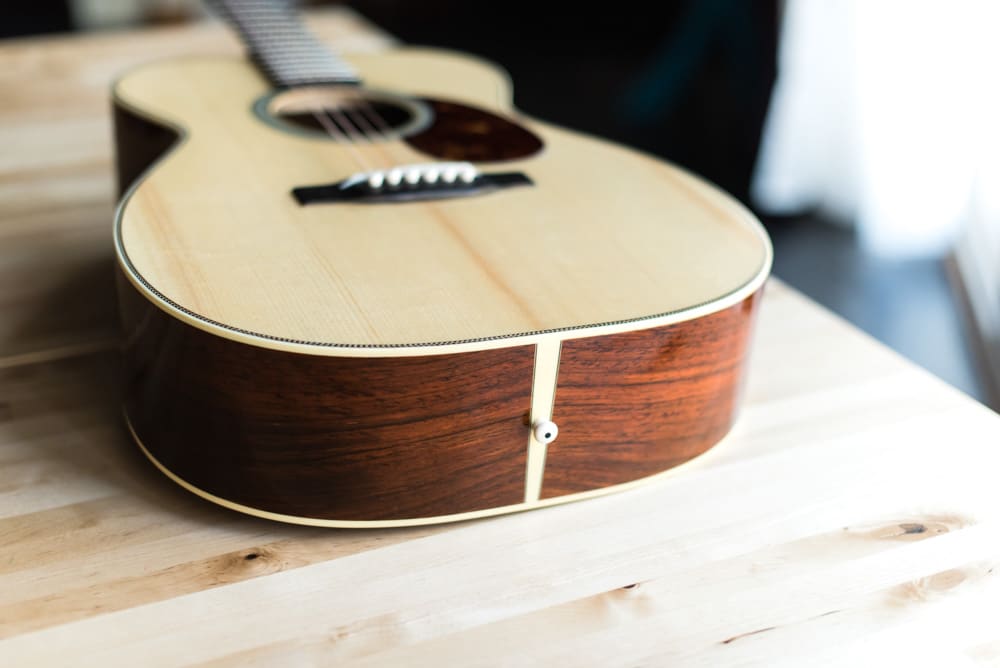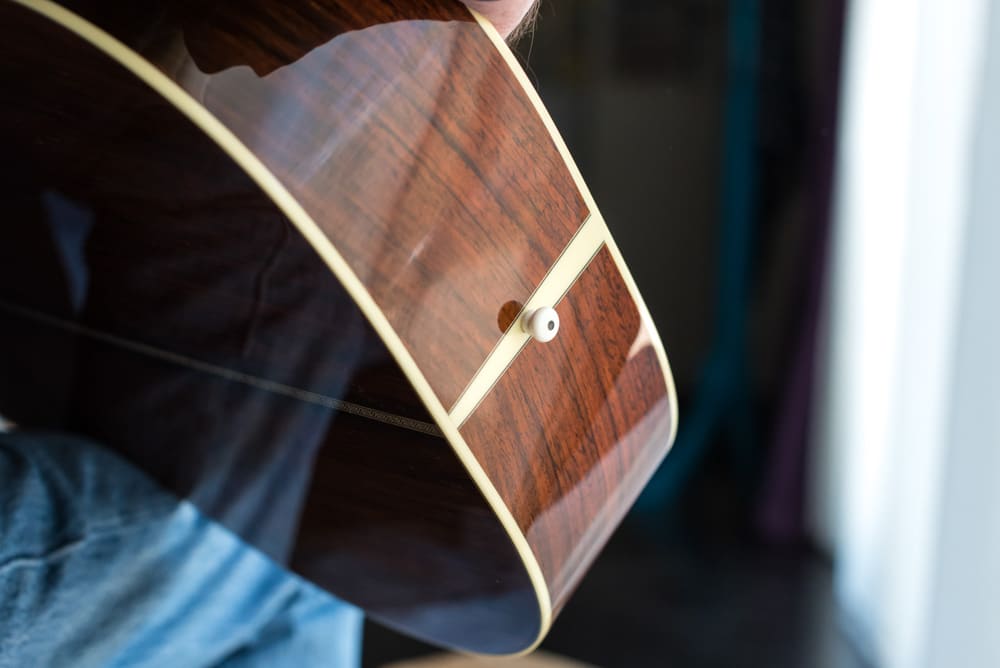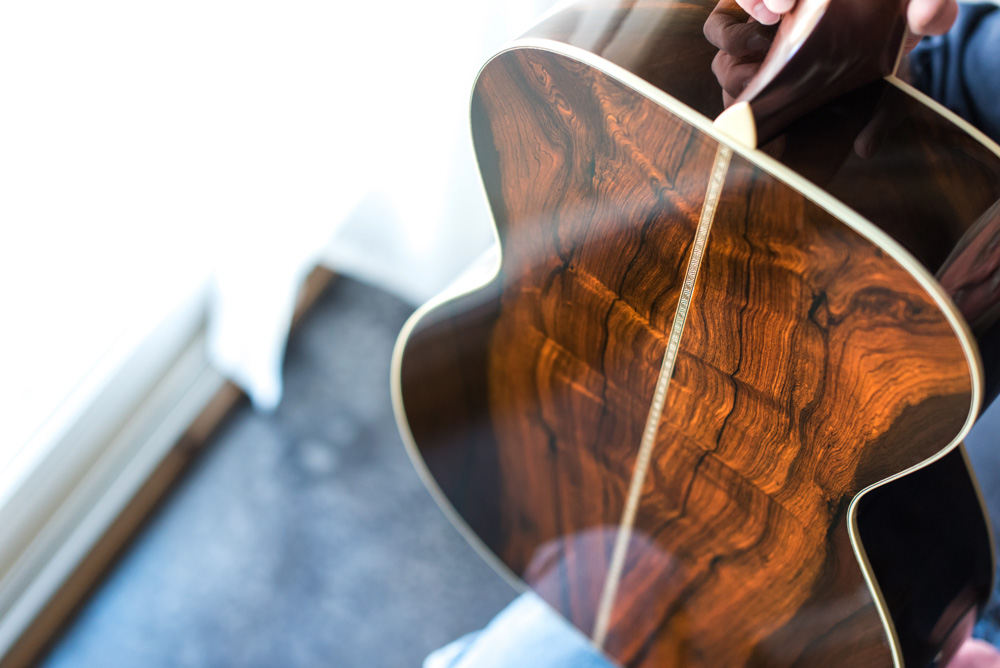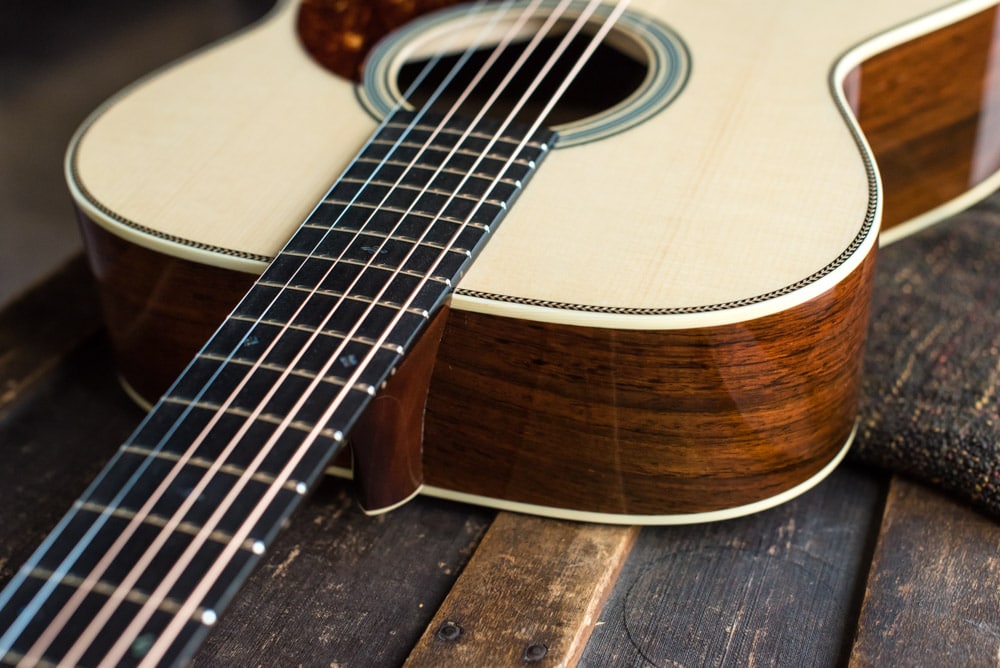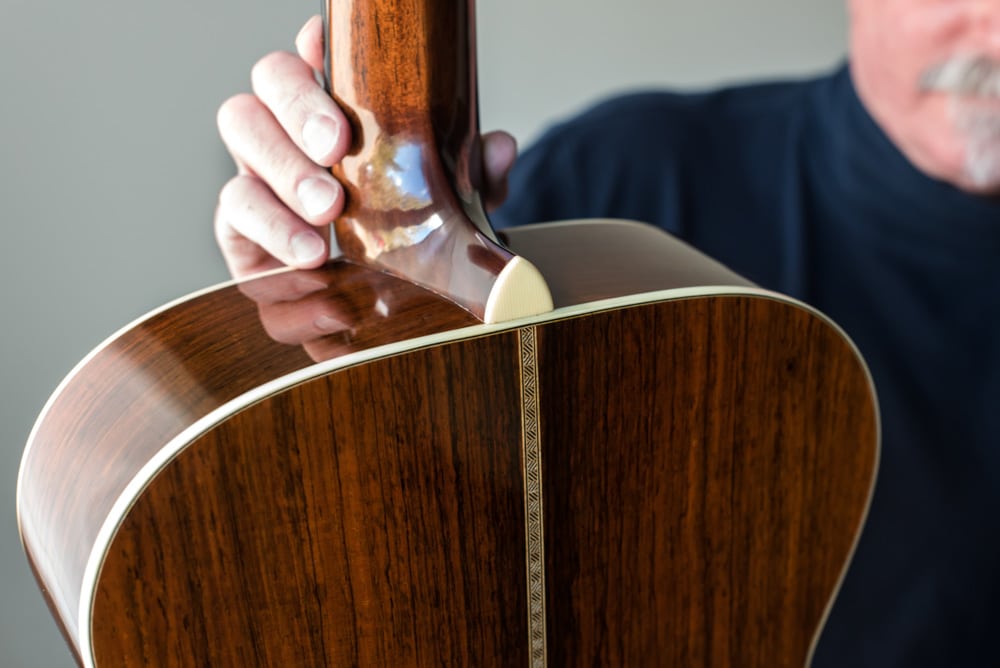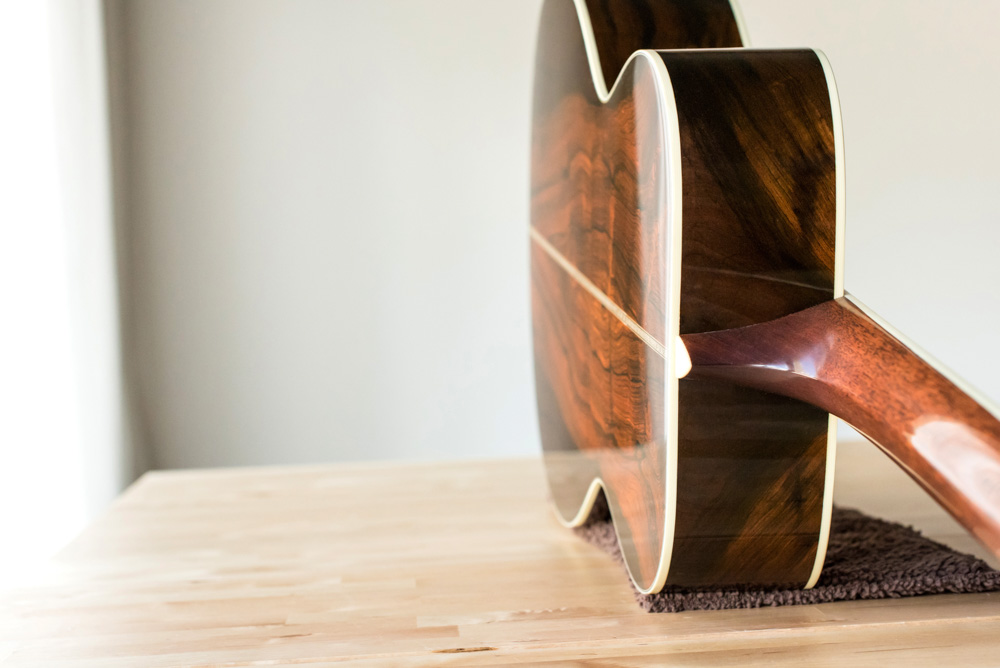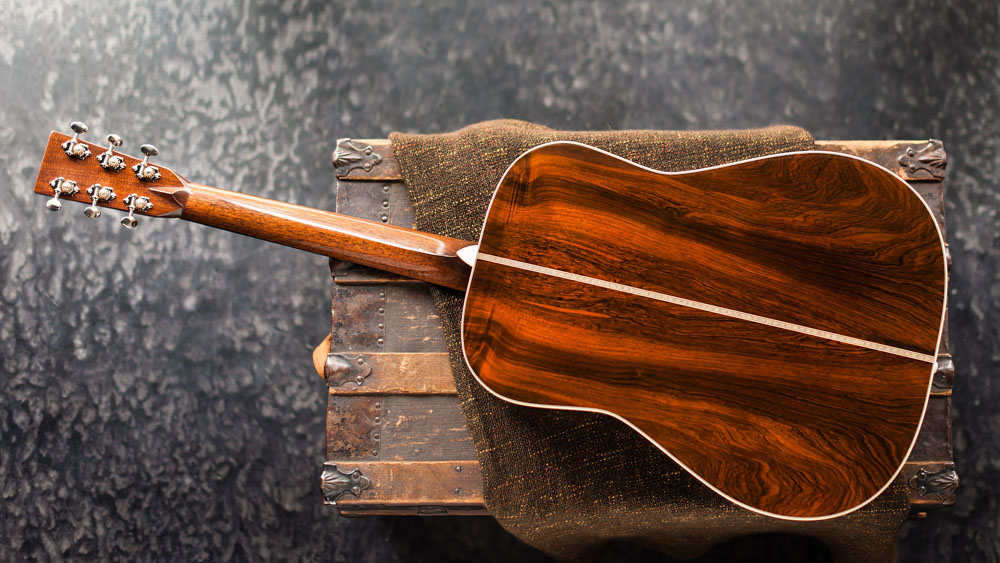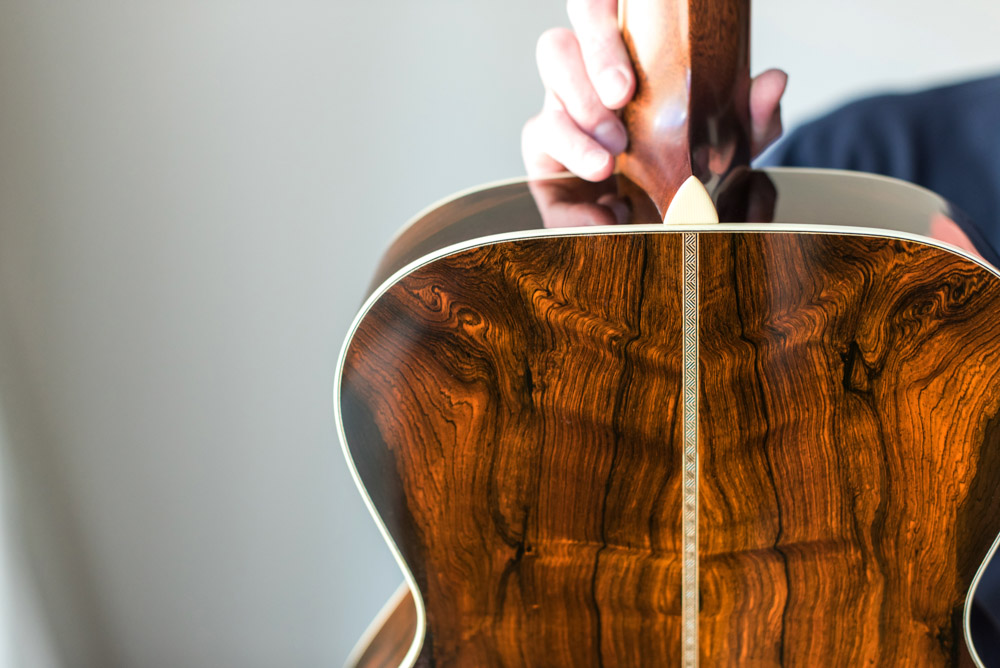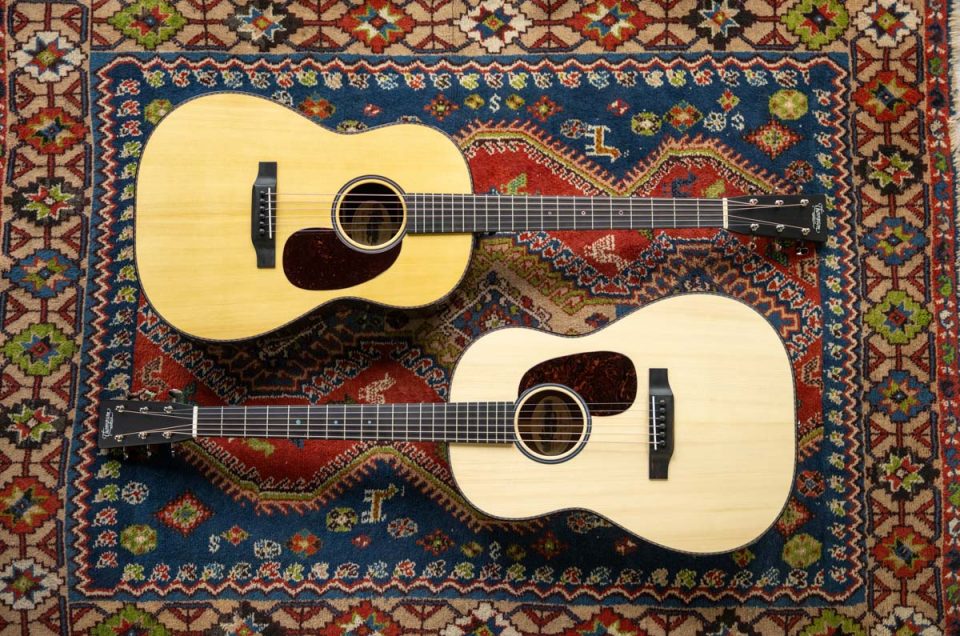Pick a tree. Any tree? Not all woods are created equal.
When composing and creating instruments of sublime distinction, our team of skilled craftsmen hand-selects prime cuts of the finest tonewood. Out of the many forests of different material that can be transformed into a guitar: maple, mahogany or walnut, the sterling-standard is Brazilian Rosewood.
Befriending this wonder-wood’s bad reputation to make use of its attributes and aesthetics, is something of a love-hate relationship. It’s hard to work with, frustratingly brittle, seems to always want to crack and at times hard to glue. But traditionally, classical guitars are historically made of musicians’ first choice, Rosewood.
Notorious for these troublesome aspects, the things that make it difficult to work with also imbue it with superb tonal qualities that luthiers love. Different woods utilized on the guitars’ backs and sides deliver different sound qualities. In guitarmaking, similar to cooking or winemaking, the specific choice of woods are the spices that color and flavor the instrument. Where these woods are grown and the soils they are born in have a resonating impact.
Mahogany makes a great sound in guitar but gives a very different, dry, snappy tone. Brazilian rosewood has a complex tonal range, comprised of a soothing warmth and brightness to the ear.. Simply put, each note is a symphony, a great swelling of all these tones flowing out of the guitar.
Much of it depends on the style of music you play that determines what wood is chosen for your new guitar. Rosewood has a much greater range of overtones but the sound complexities flowing from these superb guitars are savored for their unique multiplicity of amazing aural attributes.
Whether playing country or the blues, traditions of music gravitate toward specific instruments and certain guitar styles. Dreadnought models made by Thompson are geared toward the bluegrass and flatpicking crowd. It’s strictly a matter of taste and preference and Thompson Guitars can confidently accommodate them all.



